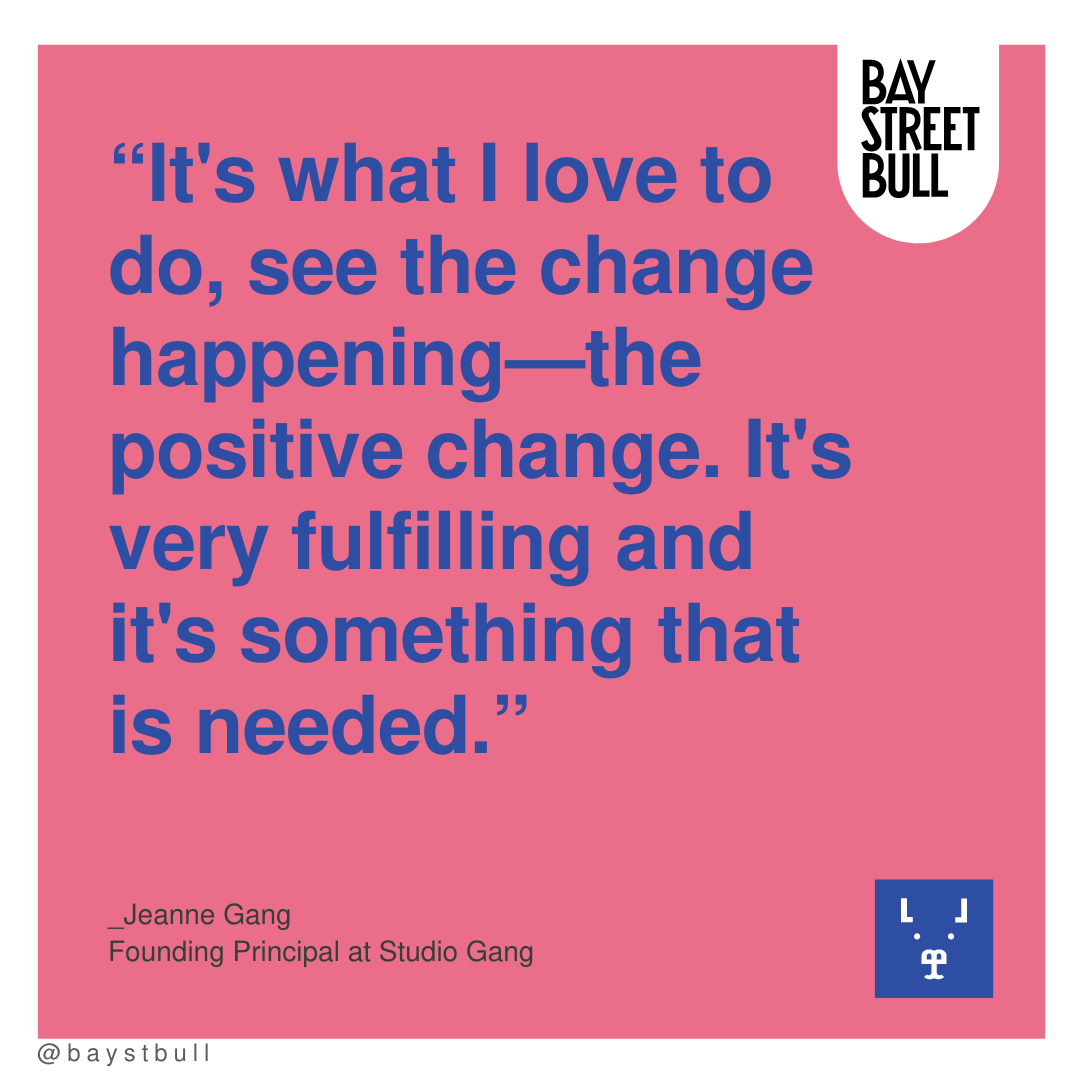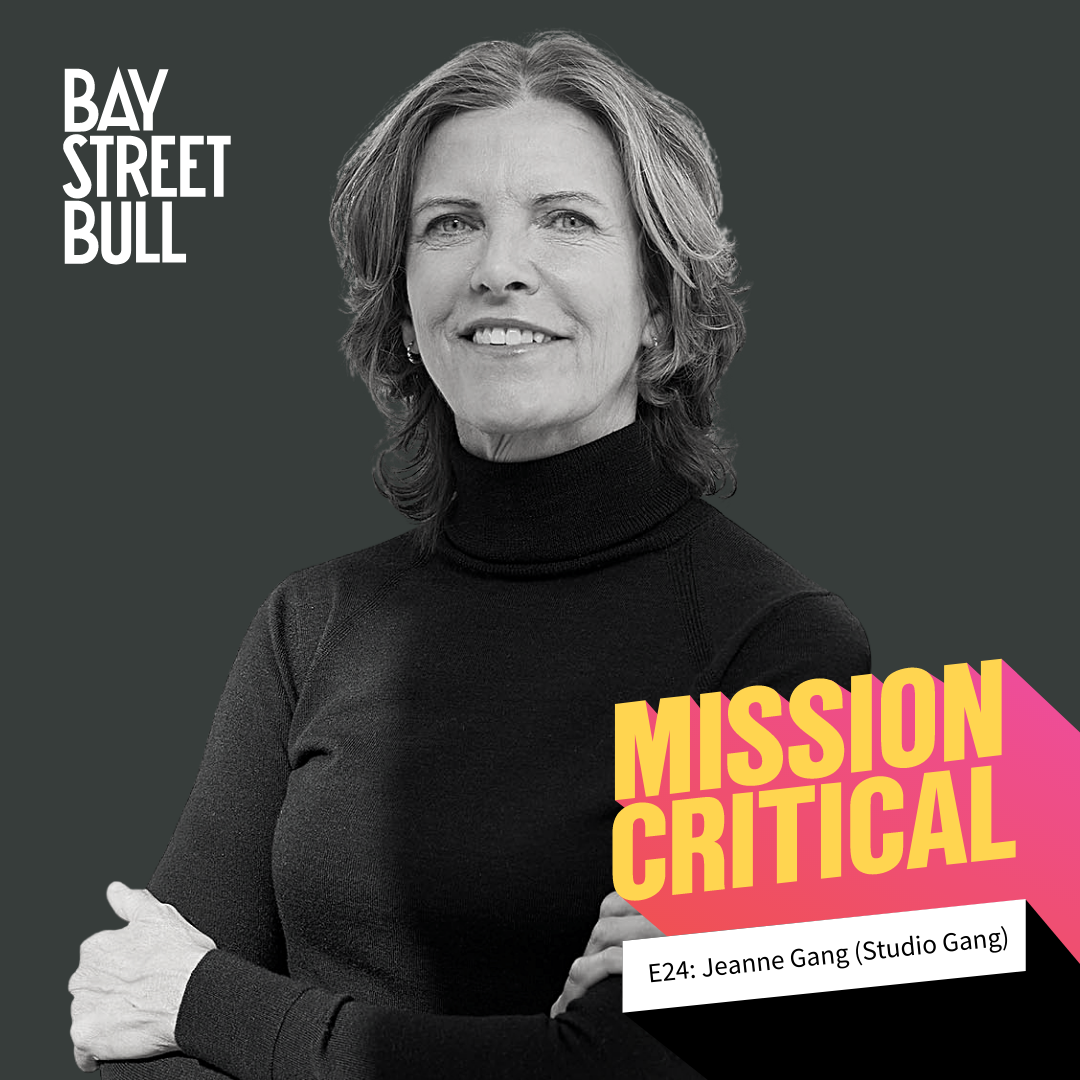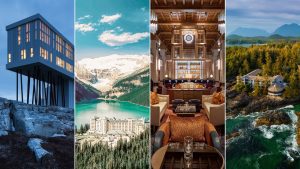[vc_row][vc_column][vc_column_text]
Jeanne Gang shares how architecture can be a vehicle for social impact.
[vc_row][vc_column][vc_separator][/vc_column][/vc_row]
Architectural design is like a language. There’s a lot that we can learn about ourselves and the society we’re a part of simply by observing the structures around us. It tells us about what we value as a society, how we gather and migrate throughout the day, how we work, how sustainable we are, and more. It’s a snapshot of culture, our history, and our future.
Joining us on the podcast today is world-renowned architect Jeanne Gang, the founding principal, and partner of the award-winning Studio Gang. Named one of 2019’s most influential people in the world by TIME magazine, Jeanne’s work is recognized for its forward approach to design. She’s a changemaker that has championed social impact strategies to improve ecological biodiversity in cities and close the gender wage gap within her industry.
Today, Jeanne joins Lance to talk about great design, using architecture as a force for social change, and her first project in Canada, One Delisle.
KEY HIGHLIGHTS
[3:56] Jeanne Gang shares her approach in her industry
[6:45] Using architecture to build relationships
[9:10] Actionable idealism
[14:35] How can we use architecture to create positive social change?
[19:00] One Delisle Project
[23:00] What is perfection in the world of architecture?
Listen to the episode below or on your platform of choice.
[vc_row][vc_column][vc_raw_html]JTNDcCUzRSUzQ2lmcmFtZSUyMGhlaWdodCUzRCUyMjIwMHB4JTIyJTIwd2lkdGglM0QlMjIxMDAlMjUlMjIlMjBmcmFtZWJvcmRlciUzRCUyMm5vJTIyJTIwc2Nyb2xsaW5nJTNEJTIybm8lMjIlMjBzZWFtbGVzcyUyMHNyYyUzRCUyMmh0dHBzJTNBJTJGJTJGcGxheWVyLnNpbXBsZWNhc3QuY29tJTJGMGEwODQ1ODAtZmU1NC00YjM0LThlYTUtMDQ0YmYzOGFjYzkyJTNGZGFyayUzRGZhbHNlJTIyJTNFJTNDJTJGaWZyYW1lJTNFJTNDJTJGcCUzRQ==[/vc_raw_html][/vc_column][/vc_row][vc_row][vc_column][vc_column_text]
INTERVIEW
[INTRO]
Welcome to Mission Critical, a podcast about the big picture, the purpose, and the values that drive today’s most game-changing companies, entrepreneurs, and leaders. I’m your host, Lance Chung, Editor-in-Chief of Bay Street Bull and I’ll be introducing you to a group of brilliant minds who are making an impact on the world and forging the path ahead. While they may all be very different from one another, the question remains the same: What’s your mission?
Take a moment from whatever you’re doing right now, whether that’s having breakfast, working at your desk, or cooking dinner, and take a look at the world around you: What do you see? What kind of buildings do you find yourself surrounded by? What kind of building are you in? In its own unique way, architectural design is like a language. There’s a lot that we can learn about ourselves and the society we’re a part of simply by observing the structures around us. I’ve always thought of food as a vessel for culture and the way it speaks to how we break bread, build bonds and value each other. In much the same way, I think architecture does the same thing. It tells us about what we value as a society, how we gather and migrate throughout the day, how we work, how sustainable we are, and more. It’s a snapshot of culture, our history, and our future.
On the podcast today, we have world-renowned architect Jeanne Gang, the Founding Principal and Partner of the award-winning Studio Gang. Jeanne is also a professor of practice at the Harvard Graduate School of Design and was named one of 2019’s most influential people in the world by Time Magazine. Based in Chicago—the birthplace of the skyscraper—Jeanne’s work is recognized for its forward approach to design that draws inspiration from ecological systems, connecting people with the community’s environments. She’s a changemaker that has championed social impact strategies to improve ecological biodiversity in cities and close the gender wage gap within her industry. Today, Jeanne joins me to talk about great design, using architecture as a force for social change, and her first project in Canada: One Delisle.
Lance Chung: Hi Jeanne, it’s so nice to be chatting. Let me start off by asking what do you think makes a great design experience? Whether that’s architecture, whether that’s a product, from a very like bird’s eye view, what does a great design experience mean to you?
Jeanne Gang: One quality of it is where it’s so responding to your needs and desires that you don’t even notice the design in a certain way. That’s important in terms of the functionality and generosity of the design so that it’s something that’s giving you what you need at that moment. We often start from the inside out with the building, thinking about how people move, what do they need, how are they approaching, what’s the experience from your arrival to your departure? I think that’s really important. Design experiences where there is an aesthetic element to it as well, where there’s a rethinking; I’m thinking of zooming out, thinking of industrial design, where something is reconsidered in a way that calls your attention to it. That works for architecture too. Something that is maybe ordinary but becomes extraordinary.
Lance Chung: In your line of work specifically, in the work that you do at Studio Gang, what guides your approach to everything that you do? What is your overarching design thesis?
Jeanne Gang: First of all, I’m really attracted to projects where there’s an organization. It could be an organization of one, or it could be an organization of a group of people that are trying to redefine themselves and they have put their trust in design to do that. We work with cultural institutions and we work with communities who are trying to solve issues or become something different. And the philosophy is to get into their brain, and everyone that they are engaging with, and to become part of their team, become one with the client to try to deeply understand what they’re working on.
A lot of times it is a problem, but it’s not always a problem. Sometimes it could be a reinvention because of a change in their philosophy. It’s not necessarily a problem, but it’s really going in a new direction. Those are the kind of things that I’m attracted to, and I think we can do well because of our research, because of our compassion and love of learning, not dictating the design and letting it grow out of the individual organization so that it’s relevant for them.


Lance Chung: That’s really interesting. Part of your experience when you’re working with new clients or approaching a new project is built on your experience and your expertise, but what part of that is also a learning experience and a discovery experience for you?
Jeanne Gang: There’s always that element because what I like is crossing over in disciplines, like something from hospitality projects, like a hotel, can inform something like a museum project, for example, and vice versa. That’s why I really like working on different projects. Our team has deep experience with lots of different building types, and they all have their particularities, but there’s a lot of that that can be shared. You bring that to the table, but then each project, there’s some new shade of difference that I’m trying to pull out and understand so that it can be bespoke to that organization.
Lance Chung: I was reading some of the stuff on the website and I noticed that you stated previously this quote: “Most people think architects design buildings and cities, but what we design are relationships”. Can you unpack that? What does that mean? And how do buildings and structures facilitate meaningful relationships and dialogue?
Jeanne Gang: It’s true because we don’t see buildings in isolation and people in isolation, so how can it facilitate better relationships, stronger relationships? And in that sense, I always see architecture like the study of ecology. Everyone used to study species individually, everything that this species eats and drinks, but ecologists look at the relationships between the species and their environment. We need to understand how people relate and how they behave in different environments. You can pull out the behaviors that you want, like making the space social, making it so it encourages dialogue. Design-wise, maybe it has to do with having people let down their guard, how do they feel more relaxed? How do they feel cared for in a space? When the person feels like he needs to sit down, there should be benches right there. How do we create spaces in museums in order for people to contemplate things and have a dialogue with someone else that they’re with instead of feeling like they’re receiving information all the time? How do we weave that into museum spaces, for example, to make stronger relationships in? It is known that people learn more from their friends and family than they will from reading a text on a wall. We want to give those spaces to people to talk about what they just saw, and then it will sink in and they will have more original thoughts.
Lance Chung: I was reading that one of the guiding principles behind your work is what you call “actionable idealism”. What is that?
Jeane Gang: I came up with that because it’s really the “why?” Why we do, what we do, the way that we do it. There are a lot more firms now, more designers, that are activists and that’s great and I love that. I was always feeling like I was doing projects and people would say, “Why are you doing that? Why are you doing research on the Chicago River? What does that have to do with architecture?” But I do it because I care about those things. So the actionable idealism is really about being idealistic.
We want to improve our environments and our world and the things that are not working, and I think it’s possible. Actionable is about taking on the pieces that can start to make change happen. Those are designed pieces, they could be small, they could be large. We’re looking for those places where we can have an impact, so that it doesn’t stay in a book somewhere on a shelf, but it is a master plan, for example. that might get done and then not implemented. What are the things that can initiate change? And oftentimes those could be small architecture projects that are part of a bigger plan and it just starts to get the ball rolling.
Lance Chung: You’ve stated previously that the philosophy around actionable idealism requires quote “a relentless kind of optimism, determination, and even courage” Why is that so? How does something like optimism manifest in architectural design?
Jeanne Gang: To build, one needs to be optimistic because no one wants to continue to work at something that’s not going to happen. We want to see things happening. So you have to believe that it can happen. Finding the ways to help that along, one of the things that’s a real true ingredient is getting more people to support a project or an idea. The way that we like to do that is to include others in the process, to include people in the design process, and be open to that so it’s not just a designer sitting up in a tower somewhere but it’s really on the ground mobilizing people, engaging with them and getting their ideas and integrating other people’s ideas into the work. Oftentimes with neighborhoods and communities, the people who live there really know what they need best. And so we might be called in to create a plan, but we can’t do it alone. I feel that’s the same for almost all architecture that’s created, it needs to be engaging with the communities that will use it. And that helps to get support, it all works toward getting a project done and you have to be optimistic.
Lance Chung: Yes, especially today.
Jeanne Gang: Yes, I know there’s plenty of problems [laughs]. Over this last year we’ve really doubled down internally on how we’re working with the environment, how we’re working to reduce carbon in our buildings. Spreading that knowledge out throughout our entire office so everyone working on it from the big scale stuff down to the detail has that in mind. And as well as working on equity, action and how we can be bringing that into all of our work.


Lance Chung: Architecture seems very much like a vessel for tackling issues that are a part of the bigger picture, especially when it comes to the environment, there’s a lot of things happening in that space. We talk a lot about how buildings are built and planned from an ecosystem point of view and a holistic point of view, where you’re consulting with the community to make sure that there is an impact when buildings are built. That contributes to a larger question around what kind of responsibility do you think architects have to their communities that go beyond adding to a skyline? How can architects use their talents and their expertise as a force for positive social change?
Jeanne Gang: I think about these in terms of these scales radiating out from the individual responsibility of just knowing how to design something that is not bad for the environment. Those are things that we can do to self-educate, learn, and get qualified to design for that. And there’s plenty of opportunities and that’s the number one responsibility. Then it moves out from there. As you said, in communities, architects have the talent to help people visualize things that are coming. They can participate with their communities as citizens, but be very useful because of the way that we can make people understand things through visualizations.
I know a lot of architects that work in their communities, just going to a public meeting or being part of a group that’s wanting to improve something, change something in your local community, at your friends and family. Then it goes out from there. Our buildings are related to much bigger areas and it goes out from there. We can work on cities, and we can work on even environments that are bigger than cities. I’m really interested in the oceans and ocean health, and we recently worked on visualization for an exhibition about cetaceans and how they work in society. The design expertise can come into so many areas that matter to the planet.
Lance Chung: So now you have a very exciting new project, your first project in Canada, coming up. Before we talk about One Delisle, what is your first impression of Canadian cities and how we approach architectural design in general from your experience?
Jeanne Gang: If we wanted to think about cities, just in terms of a gradient from along the great lakes to the Atlantic, there’s even a difference there between the Midwest and the City of Toronto, and similar to Chicago along the great lakes. Then, it gets more related to Europe as you go further to the east. I think Toronto is so interesting because it is a kind of sibling of Chicago. To me it feels very hip and it has a cool vibe, very much like a young city in terms of the people that are there. I love it. I’m from Chicago but Toronto always feels a little bit cooler and a little bit hipper, but you probably think the same about Chicago.
Lance Chung: I love Chicago. I was actually blown away by my first trip to Chicago and just the diversity of architectural design and how everything seemed so mixed in, I can’t even explain it. I went on, I know it’s very touristy to do, but I went on that riverboat architectural tour, and I learned a lot and I just thought it was so interesting how everything connects to the history of the city and ties again to our conversation. Larger things that were happening in society and politics and things like that that I find very interesting. I do love Chicago and the food scene there, so I need to make it back as soon as we’re out of the woods with everything going on.
Jeanne Gang: I find that common, if you’re from Chicago you love going to Toronto and if you’re in Toronto, you like going to Chicago. So they’re very similar but different, like siblings.
Lance Chung: One Delisle is your first project in Canada, located in Toronto. How is this project a continuation of your overarching mission and design ethos at Studio Gang?
Jeanne Gang: The first thing people notice about it is the height, and I know that’s sensitive sometimes, but as a designer and urbanist, we know that it’s better to keep people closely connected and closer to transportation networks to reduce climate change. And also to make cities walkable and less reliant on cars. So it makes sense to put taller buildings closer to those nodes and One Delisle is like that. Then it comes to how do you do a taller building that connects people to each other and to their environment? I’ve been very interested in doing that through the social spaces of the building, at the base, the balcony network and the way that they let people step outside, and this building has that in a very interesting way in that it’s protective and it’s outside, but it’s also recognizing the climate and making it somewhat protected from winds and some difference differences that people gravitate towards. In a building like that, you can choose if you want a bigger living room and a smaller balcony, or a smaller living room and bigger balcony, things like that are some choices for people to make. I see it as a socially connected building, one that is very vibrant on the street, on the ground level, with lots of transparency and integrating historical fabric and is pedestrian-friendly.
Lance Chung: Would you say it is a continuation of the other buildings and projects within your portfolio and the impact that you’d like to have on the local community and the why of it all?
Jeanne Gang: We need to get people closer to public transport, so tall buildings are necessary. I didn’t know I would be doing them when I started out in architecture, but I got this opportunity with the first building in Chicago, which was the Aqua Tower, and where I really started to think about all these qualities that I wanted to bring to the residential tower and to any vertical building. How do you get people connected to the outdoors? How do you get them connected to each other? Those are some of the principles that inform it, however, the design is really unique to there [Toronto]. We worked very closely with the city in terms of the overall way that it lands in the ground. It starts out more rectilinear and then it becomes more cylindrical towards the top to reduce overshadow. So there’s a lot of considerations that are unique to it, but yes, it fits in with these points that I’m interested in for tall buildings.


Lance Chung: I have two more questions, and this is something that I ask in a lot of my interviews because I find it really interesting to see what people’s perspectives are on it; what do you think is more important in your line of work, progress or perfection? How are they related to each other? In terms of architecture, I think that’s an interesting thing to think about just in terms of how we evolve in our line of thinking, but what does perfection even mean in your line of work? How do those two relate to each other?
Jeanne Gang: I don’t think I’ve ever used the word perfection in any format. It’s a great question because, probably, a lot of architects do think about that, but I think of the relationships. I think of the ability for a building to evolve and to accept people—especially with residential buildings. I want people to make it their own, which would mean that if it was to be “perfect,” you wouldn’t want anyone to live there and put stuff on the balcony. There are buildings that kind of discourage that through their design. But I don’t think life is imperfect. I think life and variety and living, that’s perfect. It has so much variety and it’s not constrained too much but there’s some structure to it. That’s kind of my take on it, but I love that question, it’s very interesting.
Lance Chung: It’s really interesting to see how people answer that question across different fields. Whether you’re working materials innovation for a fashion company, or you work at a financial technology company, just the kind of different perspectives that you have. But the overarching consensus seems to be that progress is always more important than perfection. What is perfection? I always find it interesting.
Jeanne Gang: Some people would have said, if they knew me and how I work, the number of hours I work on things to make it the best it can be, that I would be a “perfectionist” from that viewpoint, but the aim of it isn’t to eliminate these differences.
Lance Chung: Last question here, in the interviews that we have, we talk a lot about mission-driven companies, about what drives people, what is their purpose, and their why. We’ve touched on it a few times in this interview, but as a way to round this out, what is the bigger picture for you? What is your mission at the end of the day?
Jeanne Gang: I think it’s to make our environment, our built environment, more connected to the natural environment, more learning from the natural environment. And why? Because this is the way that we need to go to have a positive impact on both the climate situation and social justice. We need to make progress in these areas, and my talents are in design and connecting with people, so this is my mission. It’s what I love to do too, to see the change happening—the positive change. It’s very fulfilling and it’s something that is needed.
[OUTRO]
Jeanne and her team are changing the world by literally building it around us. Architects like her are drawing blueprints for the future by intersecting the needs of both the environment and society at the same time. Through her work, she’s challenging us all to look at buildings in a different way, not as mere shelters to live and work in, but as vessels for dialogue and social change, ecosystems that cultivate community and help us better understand how to exist and thrive together.
[yikes-mailchimp form=”1″ title=”1″ submit=”SUBSCRIBE”][/vc_column_text][/vc_column][/vc_row]








